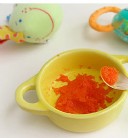中华护理杂志 2000年第4期第35卷 护理研究
单位:杨苏华(北京医科大学第三临床医院妇产科 100083);郑修霞(北京医科大学护理学院)
关键词:产后行为调适;Rubin分期;剖宫产;自然分娩方式
摘要 目的:为识别目前产妇产后行为的调适过程。方法:设计产后行为调查表,根据调查表对1998年4~5月在我院分娩的60例产妇的产后调适行为进行分析。结果:剖宫产产妇进入母亲执行期的时间最快者为16.1 h,最慢者为55.2 h,平均时间为30.4 h。经阴道分娩的产妇进入执行期的时间最快者仅需要3 h,最慢者为23.9 h,平均为12.2 h。 运用t检验,两种方式分娩的产妇进入执行期的时间比较有显著性差异(P<0.01)。结论:分娩方式对产妇进入执行期的时间有重要影响。上述产妇进入执行期的时间较Rubin分期或最近的国外分期提前,本文结合民族文化背景讨论了产生这种差异的原因。
Analysis on the Adaptation of Patient Who Deliveried by Nature and Caesarean Section Way
Yang Su-hua and Zheng Xiu-xia
(The Third Hospital of Beijing Medical University,100083)
Abstract Rubin Stage was emerged in the early 1960s.With the developement of society and obstetrics nursing,the deliveried woman adjust process is shorter than Rubin Stage.In order to identify the process,we designed the invesitgation table refered to foreign works.We analysed 60 cases who were deliveried in our hospital in Apirl and May 1998.We found that Caesarean Section patients entered into the mother state of mind need at least 16.1hrs,at most 55.2hrs,and the average time was 30.4hrs,the nature deliveried patient need at least 3hrs,at most 23.9hrs,and the average was 12.2hrs.Analysed by t-test,the difference was significant(P<0.10).The result revealed that the delivery way affect the patient entering into the mother state of mind.The time which patient need to enter into the mother state of mind was shorter than Rubin Stage or the recent foreign stage.We discussed the reason from the angle of national culture.
Key words Adjustment after delivery Rubin stage Caesarean section Nature delivery
如何使产妇在产后尽快接纳新生儿、承担起家庭新角色的功能是产科护理工作重点之一。[1] 为完成这一工作使命,产科护理工作者除应了解产妇产后生理功能恢复过程,还需识别她们的产后行为调适过程。根据产妇产后的心理、行为变化,Rubin将产后母亲调适过程分为三个时期:接受期(taking in)、执行期(taking hold)及释放期(letting go)。[2] 由于Rubin分期产生于60年代早期,随社会变迁及产科护理发展,以后测试的产妇行为调适过程均较Rubin分期缩短。[3] 目前国内尚无产妇产后适应分期的报道,而国外已将产后行为调适作为促进产妇重返工作岗位的重要研究项目。[4]为此,我们对产妇产后适应分期进行了调查分析。
1 对象与方法
1.1 对象
1998年4~5月北京医科大学第三临床医院产科产妇60例,其中剖宫产32例,经阴道分娩28例;产妇均为初产,平均年龄28.1岁;产后无并发症,可供正常哺乳(剖宫产6 h后进半流食,排气后进普食。)新生儿胎龄37~42周,体重>2500 g,Apgar评分均为10分。
1.2 方法
1.2.1 产后母亲行为调查内容及分期标准
参考最近国外有关论述,[3] 设计产后母亲行为调查表,包括20项条目问答,内容均与产后母亲调适行为相关。根据Rubin分期定义[2]确定各期标准如下:
接受期—即依赖行为时期:注重自我、对照顾新生儿不感兴趣;沉思于分娩经验过程;口述对睡眠与食物的需求;日常生活、行为表现为被动、依赖护士的帮助。
执行期—介于依赖与独立行为之间、母亲恢复活动时期:注意力从自我扩大到新生儿;在护士的帮助、指导下可进行独立的自我照顾活动;经常口述身体机能与自我及新生儿的关系;开始接受学习自我和新生儿护理,但有时缺乏信心。
释放期—产妇承担母亲新角色责任的时期:照顾自我及婴儿独立性增加;能区别对待婴儿与自我;掌握了母乳喂养方法、婴儿护理技巧。以婴儿为纽带与社会支持系统有效沟通、重新调整家庭关系。
1.2.2 资料的收集与处理
发放调查表65份,有效问卷60份。按各期标准对调查表进行分析,确定产妇进入执行期的时间;将32例剖宫产产妇与28例阴道分娩产妇进入执行期的时间进行显著性检验。













